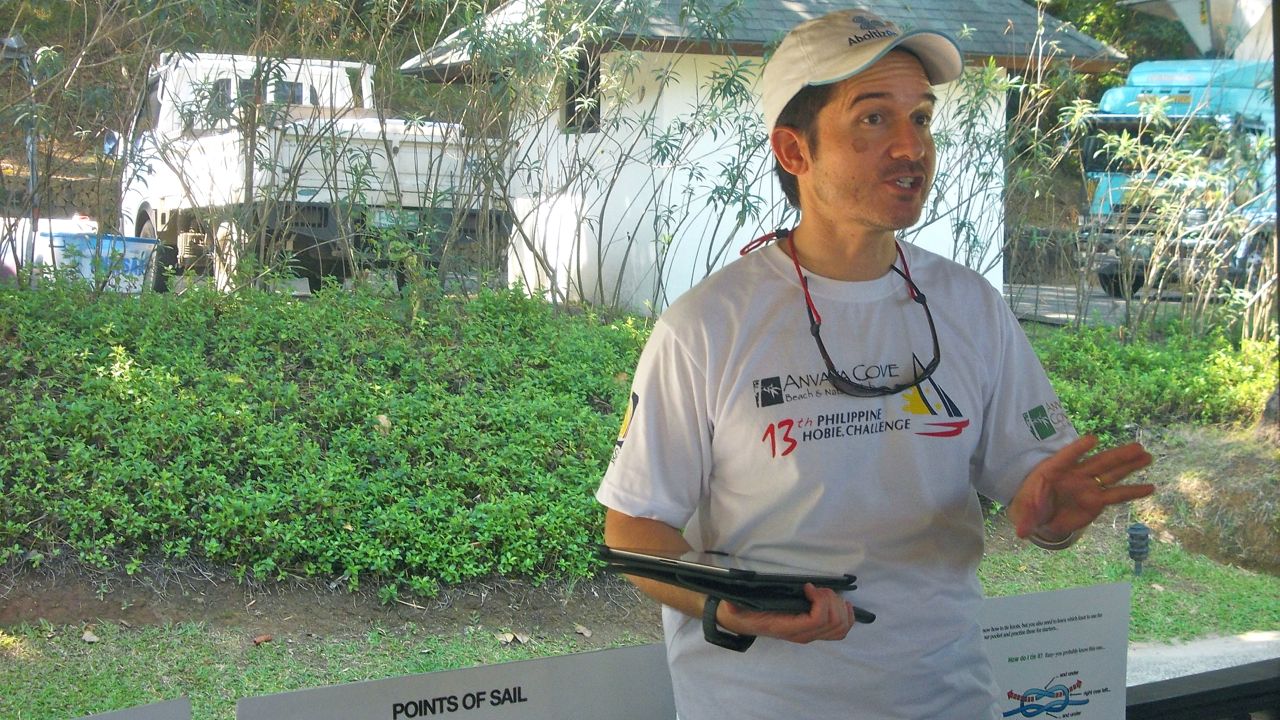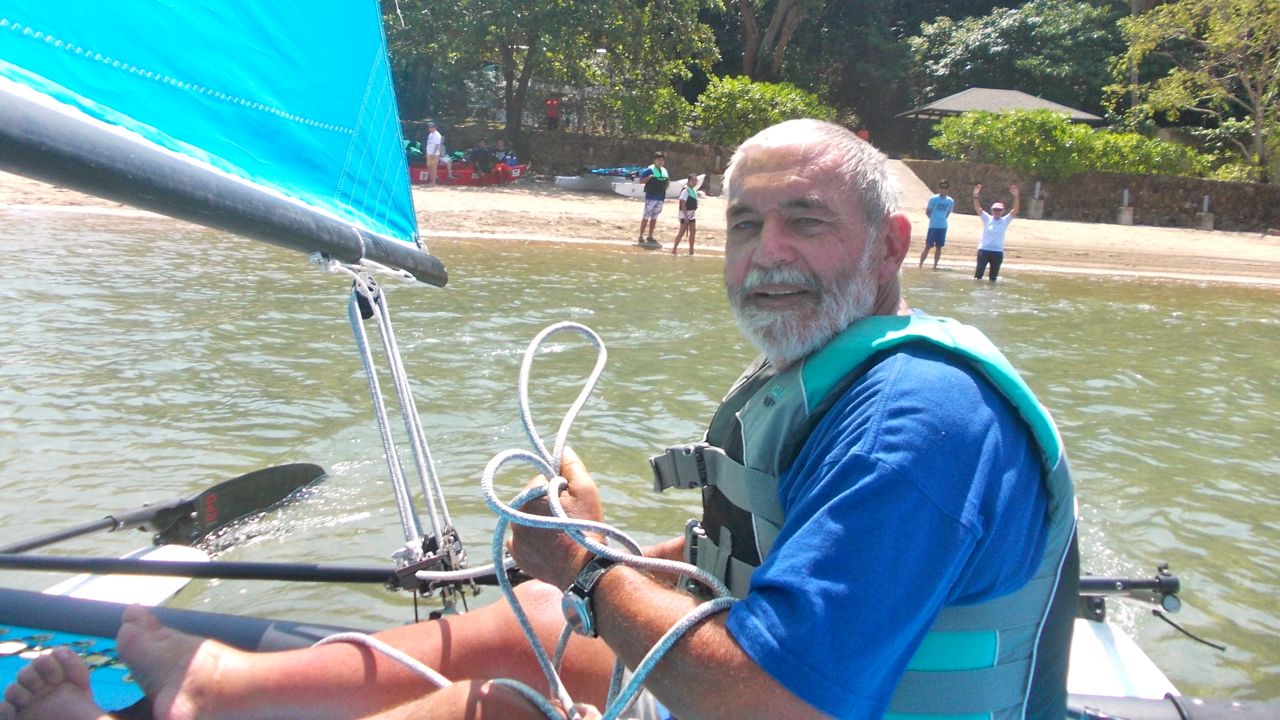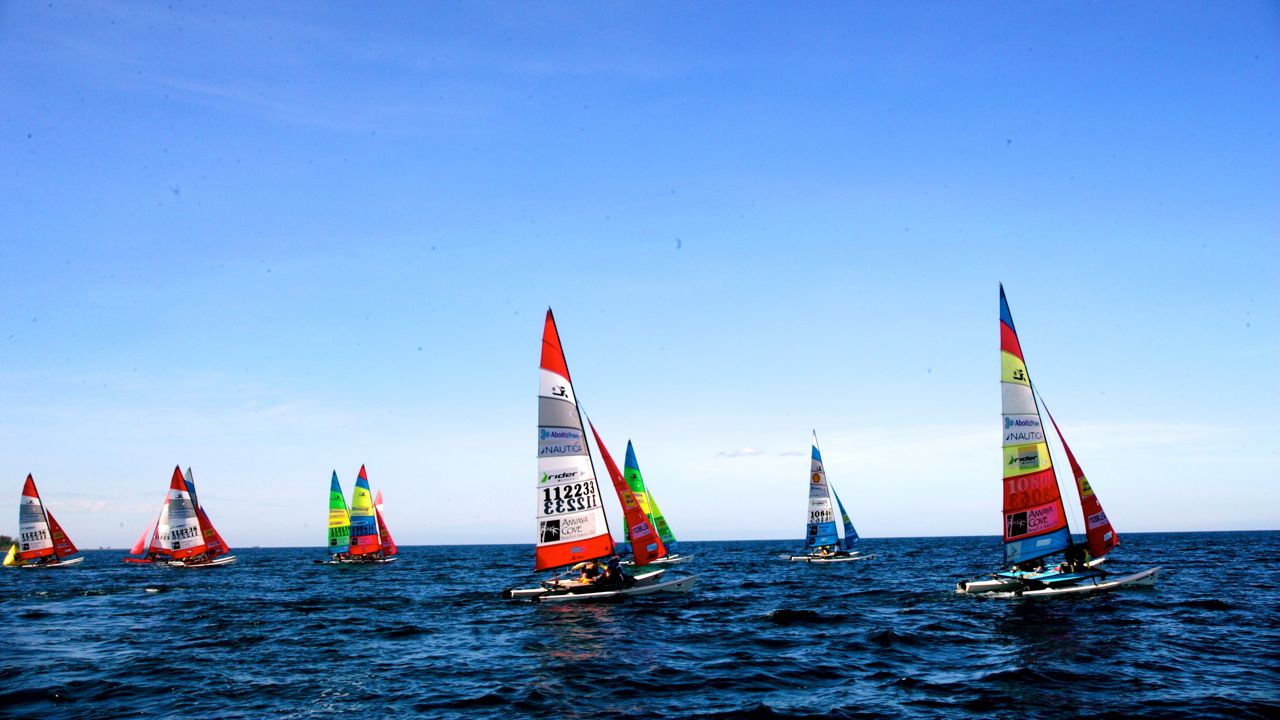SUMMARY
This is AI generated summarization, which may have errors. For context, always refer to the full article.

MANILA, Philippines – “Sailing is the most fun you can have with your clothes on,” said Roman Azanza, president of the Philippine Inter-Island National Sailing Foundation or PHINSAF. On a searing day on the shores of Anvaya Cove in Bataan, several members of the sailing foundation together with guests welcomed the participants of the 13th Philippine Hobie Challenge.
Held since 1999, the Philippine Hobie Challenge is a grueling 250 nautical mile (500 km) regatta which, this year, started in Zambales and ended in Anvaya Cove. It was held over the course of 7 days with 16 pairs of participants from countries like Australia, France, Italy, USA, Taiwan, and the Philippines racing to the finish on hobie cats (small catamarans with two hulls).

“Sailing is a lifetime sport that anyone can get into, at any age or gender,” said Azanza. “It’s an active lifestyle where you get to be one with nature.
“It just opens up a whole new adventure to beachside living and to living in a country like the Philippines.”
The sight of 16 hobies zipping in between islands and flying past the large shipping vessels was a magnificent sight; their more than 20-ft vibrant sails slicing through the cerulean waters of the South China Sea.

According to Raffy Nieto, a member of PHINSAF: “Sailing is actually not a physical sport where you need to be physically fit or be of a certain age; it’s a cerebral sport.
“As long as you understand the principles (of sailing) and have a good feel of the boat, the water, and the wind, there’s no reason why somebody can’t learn how to sail.”
Perhaps the most important factor in sailing, as most sailors know, is the wind. Hobies move by the power of the wind alone. Because of their size, hobies are the fastest of small sailboats.

There are two sails on a hobie: “The big main sail which is like the engine of the boat, and what we call the jib sail which is smaller and acts like a turbo charger,” said Nieto. “You can actually sail the boat without the jib. But if you want it to go faster, you use the jib.”
According to Bruce Tardrew, a 68-year-old Australian participant in the regatta, and — believe it or not — one of the top hobie sailors in the world, “there is the misconception about sails that they work by the wind blowing on them” similar to blowing on a paper boat to make it move.
“Sails on these kinds of boats only work that way when you‘re traveling in the direction of the wind,” he told Rappler.

“At any other angle, they actually work like wings on an airplane. What you’re trying to do with the sails is to generate lift. It’s not so much the wind blowing on the sails but the lift the sail shape creates that, in turn, moves the boat.”
As for the boat itself, there are several important parts. “Normally,” said Nieto, “you’d just say front, back, left, or right. You can’t say those in sailing because it’s always with respect to where you’re standing.”
The pointed or front part of the boat is called the fore, and the back is called the aft. The left part — so to speak — is called the port side, and opposite on the right is the starboard side. And then there are the many ropes — called sheets — that help control the main and jib sail.

A brand new hobie can set you back half a million pesos. “But there’s an active second-hand market in the Philippines where you can get them for as low as P200,000,” said Azanza. “We’re always looking for new people [to join us.] We, Filipinos, have the potential to be really good sailors; we’re surrounded by sea. On the Sea Games level, for example, some of our local sailors are world class.”
He added, “When we think of sailing, it’s always of regattas and high speed races. But at the end of the day, it’s really about a personal experience: the passion for being out there with nature, having fun, and mastering the elements around you.” – Rappler.com

Peter Imbong is a freelance writer, sometimes a stylist; and on some strange nights, a host. After starting his career in a business magazine, he now writes about lifestyle, entertainment, fashion, and profiles of different personalities. Check out his blog, Peter Tries to Write.
Add a comment
How does this make you feel?





There are no comments yet. Add your comment to start the conversation.